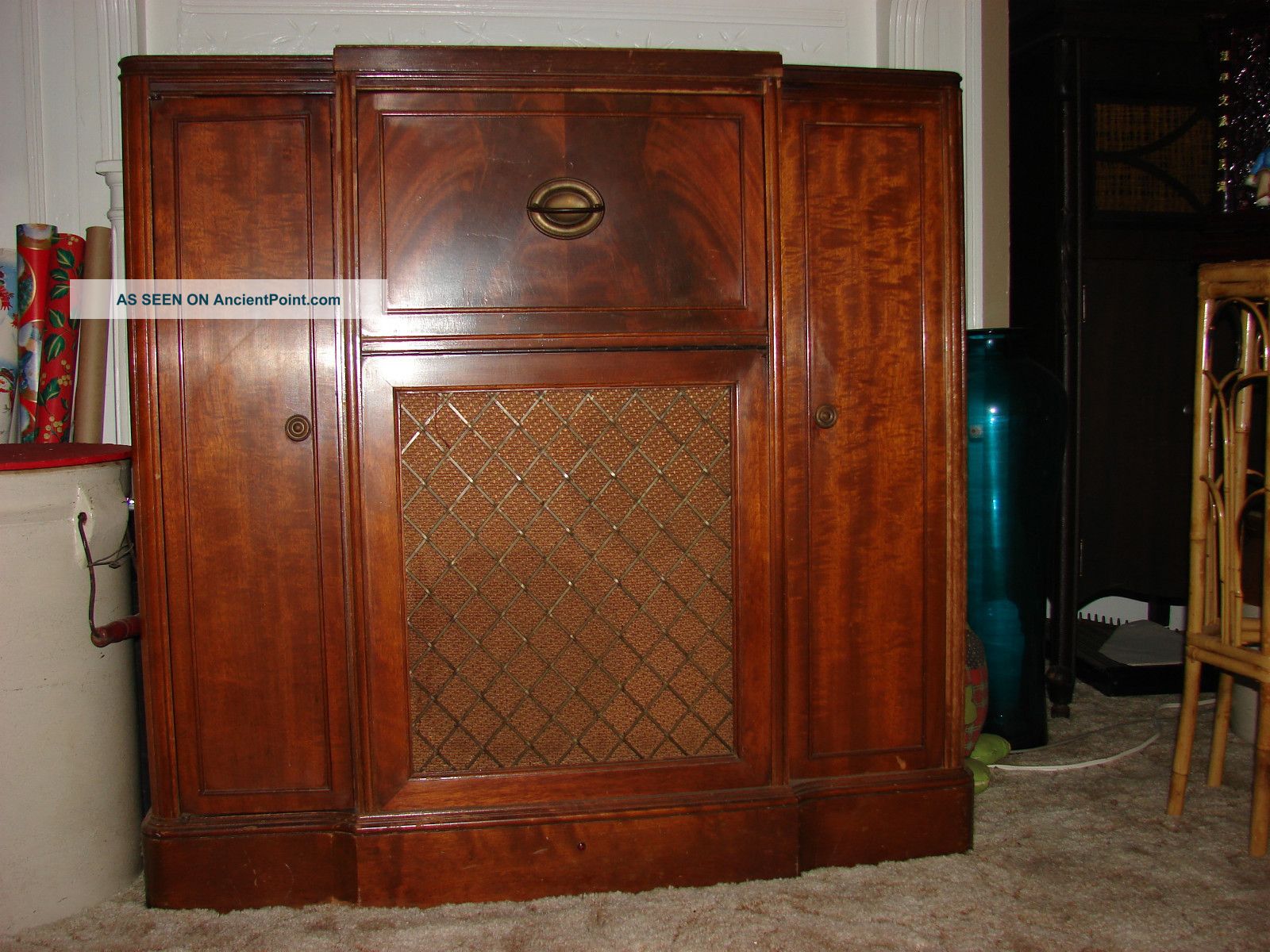My Grade 6 science teacher at Victoria Ave. School, Mr.
Fordham, said something that I still remember as one of the egregiously faulty
pronouncements of my youth.
He relayed this obscured insight to our class just before
the Christmas Holidays at the end of 1959.
“You’ll be able to tell your grandchildren that you lived in
this historic decade, when the total knowledge in the world actually doubled in
just 10 years,” Mr. Fordham said. “So many marvelous developments happened in
the 1950s -- jet airliners, television and the first satellites in space. An
era like this will never happen again.”
Mr. Fordham should have realized that the acceleration of new
science and technology would continue, and civilization would be churning in
its wake. Clearly, most of Mr. Fordham’s generation was the last to grow up
with things not changing a whole lot.
Like a monument to that generation, my parents’ Philco Radio
cabinet stood against the wall of our front hallway.

This high quality wooden cabinet was about a metre high,
maybe 50 cm wide and 30cm deep (about 3x2x1 in feet). It had one large speaker
in front. The speaker was behind a cloth screen protected by wooden art deco pillars.
The front top of the cabinet opened forward to reveal a plate of lighted glass
showing four scales for tuning: one for the AM frequencies, one for the FM, and
two for short wave radio bands. Along the glass, five wooden knobs protruded:
on/off; volume; tuning AM and FM; and tuning Short Wave I and II. (Photo similar)
It had been an expensive purchase, but my parents believed
when they bought it that this handsome piece of furniture would serve the
family for many years to come.
Inside the big radio were shelves of tubes that looked like
light bulbs. When the radio was on for any length of time, you could feel the
heat from those tubes as you passed by. Tubes would burn out from time to time,
so my parents kept a supply of replacements. Finding which one burned out was
always a chore. The radio had to be turned and its back removed. Then Dad had
to reach in and replace the tube that wasn’t glowing without burning his arm on
the tubes that worked.
I tinkered with those knobs to find out what sounds could
come out of the radio, but only the AM band produced anything you could listen
to. The others produced only screaks and static. There were no FM stations and
the radio would need to be connected to a large antenna to get short wave.
I dutifully returned the dial to WJR in Detroit, which was my
parents’ station. WJR carried a morning DJ named J. P. McCarthy, commentator Bud
Guest’s show called the Sunny Side of the Street Club from 8 to 8:15 weekdays,
the Lone Ranger and other serial dramas, the Tiger games, and no rock and roll
music. WJR played Perry Como, Pearl Baily, Frank Sinatra, Mills Brothers, Dean
Martin, Jo Stafford and music like that.
 Big radios like these were quickly made obsolete when
manufacturers introduced radios with tiny transistors. Without those tubes,
radios no longer needed to be heavy, cumbersome or even plugged in.
Big radios like these were quickly made obsolete when
manufacturers introduced radios with tiny transistors. Without those tubes,
radios no longer needed to be heavy, cumbersome or even plugged in.
By 1962 and some years following, I often took my plastic
6-transistor radio in its leather case all kinds of places. It was battery
powered. It fit in my hand. I could move the tuning dial with my thumb from
CKLW to WKNR to WXYZ without even looking. My little radio played Duke of Earl,
Bristol Stomp, Ruby Baby, Runaway, Peppermint Twist, Lonely Teardrops, Will You
Still Love Me Tomorrow, La Bamba, Earth Angel, Pretty Little Angel Eyes, Johnny
Angel (Angel songs seemed to be big in the early 60s), and let’s not forget, If
You Want to Be Happy (for the rest of your life, never make a pretty woman your
wife).
Portable transistor radios came with a little ear-piece. The
wire to the earpiece broke off about the third time it was used, so we listened
by holding the radio up to our ear as we walked or biked. People made the same
kind of remarks about us with our radios next to our heads as people say now
about young people always looking down at their cellphones.
A transistor radio for me was pure freedom. Transistor
radios let kids listen to what they wanted, where ever and whenever – except
around moms and dads, oh, and teachers.
Also, television got better and increased the hours of
broadcasting. In the 1950s, a test pattern was all you could get through the
day. Broadcasts began with the national anthem around 4 p.m. and signed off
around midnight.
In the early 60s, the big radio that was supposed to serve
for years to come had been replaced by a console TV in the living room and a new
small radio in the kitchen for Bud Guest in the morning and the ball game in
the afternoon.

No comments:
Post a Comment